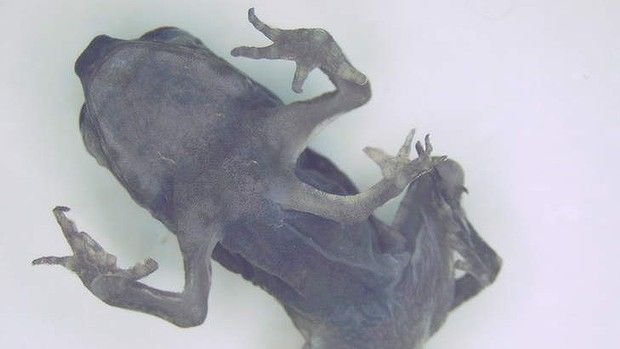In the city of Gladstone, in Queensland, some very worrying mutations of Rhinella marina, also called reed toad, were sampled, an alien species because it was native to the Americas, poisonous, introduced in Australia in the thirties in an attempt to control and reduce the population of cockroaches and that very soon, as happens in these cases, it ended up colonizing environments previously occupied by local amphibian species, thus becoming invasive and out of control.
He is about to end up run over, his mother saves him
Since when Rachel Carlson wrote his "silent spring", Water has passed under the bridges and a lot too, but the thing that still disturbs today, after more than 40 years, is to realize that a book like that is, not only perfectly current, but also endowed with enormous power forecast, then as now.
This is what I thought as soon as I learned only the latest news, in chronological order, that happened before my eyes about thepollution of anthropogenic origin (as if there were another type!) which is affecting the North East Australia.
In the city of Gladstone, in Queensland, some somewhat disturbing mutations of Rhinella marina, also said reed toad, an alien species because it was native to the Americas, poisonous, introduced in Australia in the thirties in an attempt to control and reduce the population of cockroaches and which soon, as happens in these cases, ended up colonizing environments previously occupied by local amphibian species becoming so soon invasive and out of control.
They had been found animals with more limbs than normal, eyeless, with a third foreleg growing from the torso and with eight toes instead of four.
Gladstone is one of the most industrialized cities in the country which boasts the presence of one on its territory coal-fired power stationTwo foundry and a'natural gas industry: the percentage of mutations found, however, is worrying as up to 20% of all toads on the whole sampling they were detected with severe mutations against 1% in non-urban areas.
Scott Wilson of Central Queensland University recalls that the water quality and health of fish in Gladstone Bay have already been a source of environmental concern for some time: 10 thousand were toads examined in the Gladstone region over the past three years and between 6 and 8% of them showed abnormalities directly or indirectly attributable to chemical discharges into water or air pollution.

Photo: http://www.brisbanetimes.com.au
Also last year they were found 6 dolphins and 231 turtles died.
I fishermen blame water pollution and in particular the massive dredging carried out in the port responsible for having raised contaminants from the bottom that were thus released into the waters.
It should also be remembered that the amphibians are very particular animals that are greatly affected by pollutants and foreign substances, breathing from the skin and living in humid environments are among the first to show malformations or mutations as a result of environmental damage and pollution and therefore excellent control organisms often used in spite of themselves for toxicity studies and monitoring of pollutants.
Maybe it would be good to realize that for once which is really happening in the area without being afraid of the economic repercussions that this interest could have, at least not before being concerned about the repercussions on public and environmental health, enormously compromised by man-made activities evidently out of control, bad study and bad gesture.
How quiet will spring be in Gladstone?
KIA - Carmela Giambrone
READ also:
Fukushima: the butterfly mutant damaged by radiation
The fish with 3 eyes near the nuclear power plant


























